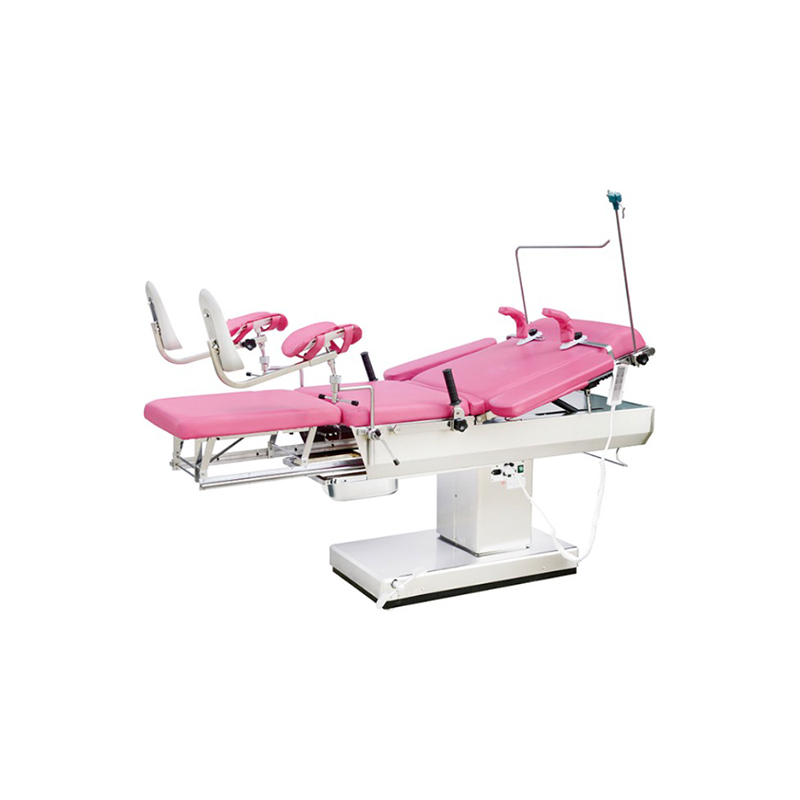Selecting the Right Electric Obstetrics and Gynecology Surgical Table for Your Healthcare Institution
 Sep 07, 2023|
Sep 07, 2023| View:542
View:542The choice of medical equipment is a critical decision for any healthcare institution. When it comes to the field of obstetrics and gynecology, selecting the right surgical table is of paramount importance. These tables play a central role in providing comfort and efficiency during procedures, ensuring patient safety, and aiding medical professionals in performing their tasks effectively. This essay will guide you through the process of choosing the right electric obstetrics and gynecology surgical table for your healthcare institution. We will emphasize key considerations, including safety features, adjustability, and weight-bearing capacity.

Safety Features: Ensuring Patient Well-being
Patient safety is the top priority in any healthcare setting, and surgical tables should be equipped with essential safety features to minimize risks during procedures. When selecting an electric obstetrics and gynecology surgical table, pay close attention to the following safety features:
1. Emergency Stop Mechanism: Look for tables that are equipped with an emergency stop button or lever. This feature allows immediate cessation of all table movements in case of an emergency, ensuring the patient's safety.
2. Locking Mechanism: Ensure that the table has a reliable locking mechanism that can securely hold the table in a fixed position when needed. This is essential for stability during procedures.
3. Side Rails: Check if the table is equipped with adjustable side rails that provide added security for patients during positioning and transportation. Side rails prevent accidental falls and are especially important for obstetric and gynecological procedures.
4. Low Height Accessibility: Opt for a table that can lower to a comfortable height for easy patient access. This feature is crucial for patients with mobility challenges or those undergoing emergency procedures.
5. Weight Sensors: Some modern surgical tables come with weight sensors that can detect the patient's weight and adjust the table's settings accordingly. This ensures that the table can support the patient safely.
Adjustability: Tailoring the Table to Your Needs
The versatility of an electric surgical table is a key factor in its usefulness in the medical field. Gynecological and obstetric procedures often require precise positioning, and an adjustable table is essential for accommodating different surgical requirements. Consider the following aspects of adjustability:
6. Height Adjustment: Ensure that the table has a broad height adjustment range to accommodate various healthcare professionals' preferences and patient needs. This flexibility allows for better ergonomics during procedures.
7. Tilt and Trendelenburg Positions: Look for a table that can tilt and achieve Trendelenburg positions when necessary. These positions are vital for procedures requiring head-down or head-up positioning, such as obstetric deliveries.
8. Lateral Tilt: Lateral tilt capabilities are crucial for gynecological procedures, enabling the medical team to access specific areas with precision. Verify that the table can provide controlled lateral tilt adjustments.
9. Leg and Foot Section Adjustments: Tables with adjustable leg and foot sections are beneficial for gynecological exams and procedures, allowing for optimal patient positioning and access.
10. Customizable Attachments: Consider whether the table supports various attachments and accessories for specific procedures, such as stirrups, leg supports, or lithotomy poles.
Weight-Bearing Capacity: Ensuring Patient and Staff Safety
Understanding the table's weight-bearing capacity is crucial to ensuring patient safety during procedures. Different patients have varying weights, and the table must be capable of safely accommodating them. Here's what to consider:
11. Weight Capacity: Determine the maximum weight the surgical table can support. Ensure that it exceeds the weight of the heaviest patients your healthcare institution typically handles. A comfortable margin is essential to avoid any risks.
In conclusion, choosing the right electric obstetrics and gynecology surgical table for your healthcare institution is a decision that demands careful consideration of safety features, adjustability, and weight-bearing capacity. Prioritizing patient safety with features like emergency stop mechanisms and side rails is non-negotiable. Moreover, the table's versatility in terms of height, tilt, and section adjustments ensures that it can adapt to various procedures and patient needs. Lastly, understanding the table's weight-bearing capacity is essential to guarantee the safety of both patients and medical staff.









